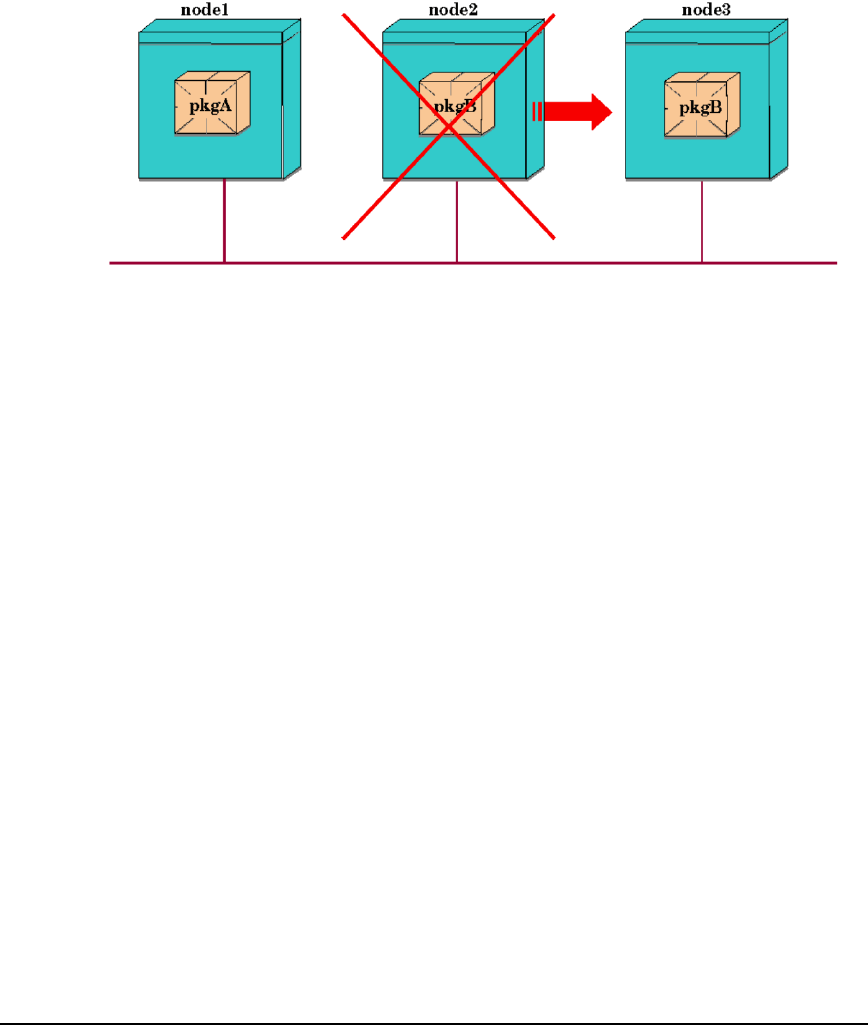Managing Serviceguard 11th Edition, Version A.11.16, Second Printing June 2004

Understanding Serviceguard Software Components
How the Package Manager Works
Chapter 372
Figure 3-4 Package Moving During Failover
Configuring Packages
Each package is separately configured. You create a package by using
Serviceguard Manager or by editing a package ASCII configuration
file (detailed instructions are given in Chapter 6). Then you use the
cmapplyconf command to check and apply the package to the cluster
configuration database. You also create the package control script,
which manages the execution of the package’s services. Then the package
is ready to run.
Deciding When and Where to Run and Halt Packages
The package configuration file assigns a name to the package and
includes a list of the nodes on which the package can run, in order of
priority (i.e., the first node in the list is the highest priority node). In
addition, the file contains three parameters that determine failover
behavior. These are the AUTO_RUN parameter, the FAILOVER_POLICY
parameter, and the FAILBACK_POLICY parameter.
Package Switching
The AUTO_RUN parameter (known in earlier versions of Serviceguard as
the PKG_SWITCHING_ENABLED parameter) defines the default global
switching attribute for the package at cluster startup, that is, whether
the package should be restarted automatically on a new node in response
to a failure, and whether it should be started automatically when the
cluster is started. Once the cluster is running, the package switching
attribute of each package can be set with the cmmodpkg command.










